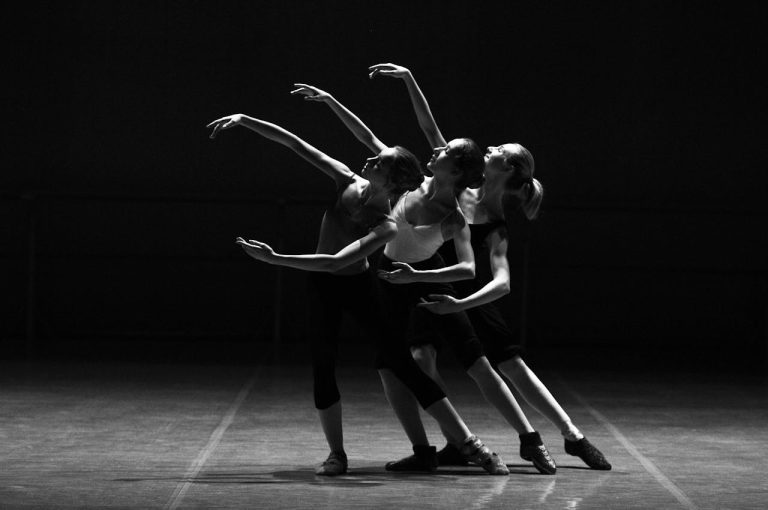In my years of guiding young minds through the complexities of the IB curriculum, I’ve found the Dance Internal Assessment (IA) to be a unique beast. Yes, with its practical and theoretical elements, the IB Dance course requires a nuanced approach, especially when choosing your Dance IA topics. By sharing insights from my experience, I hope to highlight this path for you, making it less daunting and more of an exciting opportunity to showcase your passion and understanding of dance.
Understanding the IB Dance Internal Assessment
According to the general criteria set by the IB, students at both Standard Level (SL) and Higher Level (HL) are encouraged to examine the broad areas of dance from a reflective and analytical perspective. It includes performing and understanding the reasons and methods behind their movements and choices, a challenge that I’ve seen many students enthusiastically grasp. In my experience, this aspect of the course provides a significant opportunity for students to connect deeply with their personal dance experiences and the broader context of dance as an art form and means of expression.
The IA demands thoughtful dance research, encouraging students to interrogate their practice and the influences and inspirations behind contemporary and traditional dance forms. It’s a chance to connect the dots between historical movements and the present and see how dance can communicate ideas, emotions, and stories. Essentially, the IA is where theory meets practice, and personal voice meets the collective history of dance.
Moreover, this assessment piece pushes students to think critically about performance and choreography, to evaluate works from an aesthetic standpoint, and through cultural significance, innovation, and technical execution. For SL students, the task might focus more on understanding and application. In contrast, HL students are often encouraged to take this analysis further, incorporating a more extensive range of sources and more nuanced arguments.
In preparing for their Internal Assessment, students go through a process that is as much about creating personal insight as it is about achieving academic success. They learn to express their understanding with clarity and confidence, drawing from a variety of sources-including dance performances, scholarly articles, interviews with practitioners, and personal observation. This process deepens their appreciation of dance and sharpens skills invaluable outside the dance studio: critical thinking, creative problem-solving, and effective communication.
By the way, if you’re aiming for top marks, check out the article on common pitfalls in IA writing. It’s packed with valuable insights that could really improve your work.
IB Dance IA Topics and Research Questions
Below are 50 topics for SL and HL students and research questions to guide your research and analysis.

Standard Level (SL) Dance IA Topics
SL Internal Assessments typically have a narrower scope, allowing students to concentrate on a specific aspect of dance that interests them:
- The Evolution of Ballet in the 20th Century. How did ballet evolve in response to societal changes throughout the 20th century?
- The Impact of Folk Dance on National Identity. In what ways does folk dance promote and preserve national identity?
- Contemporary Dance and Emotional Expression. How do contemporary dancers use movement to express complex emotions?
- The Role of Costuming in Dance Performances. How does costume design enhance the narrative of dance performances?
- Dance as a Form of Social Protest. Can dance be an effective tool for social protest and change? Provide examples.
- The Influence of African Dance on Modern Dance Forms. What elements of African dance can be identified in contemporary dance styles?
- The Significance of Dance in Ancient Cultures. How was dance used in ancient cultures, and what significance did it hold?
- The Choreographic Style of Alvin Ailey. How does Alvin Ailey’s choreographic style communicate themes of African-American culture and history?
- Dance Education and Youth Development. What role does dance education play in developing social and emotional skills in youth?
- The Intersection of Dance and Technology. How is technology transforming the way dance is performed and experienced?
- The Physical and Mental Benefits of Dancing. What are the key physical and mental health benefits of engaging in dance?
- The Revival of Tap Dancing in the 21st Century. What factors have contributed to the resurgence of tap dancing in recent years?
- Cultural Appropriation in Dance. How can dance industries address and avoid cultural appropriation?
- Innovations in Dance Therapy. How is dance therapy being used to treat psychological disorders?
- Gender Roles and Stereotypes in Ballet. How are traditional gender roles and stereotypes challenged in contemporary ballet?
- Influence of Popular Culture on Contemporary Dance. How has popular culture influenced the development and public perception of contemporary dance?
- Preservation of Indigenous Dance Forms. What strategies effectively preserve indigenous dance forms while respecting their cultural origins?
- The Role of Music in Dance Performance. How does music influence the choreography and performance of dance?
- The Impact of Political Changes on Ballet. How have significant political events historically influenced the evolution of ballet?
- Dance and Community Building. How does dance contribute to community building and social cohesion?
- The Rise of Dance Competitions and Their Impact. How have televised dance competitions impacted the dance industry and young dancers?
- Dance as a Form of Therapy. How is dance used as a form of therapy, and what are its benefits?
- Influence of Costume Design on Dance Interpretation. How does costume design influence the interpretation and reception of dance performances?
- Dance and Gender Fluidity. How does contemporary dance challenge the concept of gender fluidity?
- Dance in Educational Curriculums. What benefits does integrating dance into educational curriculums offer to students across various age groups?
While still challenging, SL IAs are more accessible to students who may not have as extensive a background in dance theory and practice.
Buy IB IA with Full Confidentiality!
Grab your IB IA with full privacy guaranteed.
Our no-leak policy keeps your details 100% secure.

Higher Level (HL) Dance IA Topics
The Dance IA topics for HL students are often more complex, requiring a sophisticated understanding of theory and practice:
- The Philosophical Underpinnings of Dance as a Communicative Medium. How does dance serve as a medium for philosophical expression and communication?
- The Globalization of Hip-Hop Dance. What impact has globalization had on hip-hop dance’s evolution and cultural significance?
- Dance and Disability: Challenging Conventions. How do dance companies incorporating dancers with disabilities challenge traditional notions of dance and performance?
- The Psychological Impact of Dance on Performers and Audiences. What are the psychological effects of dance on performers and their audiences?
- Intercultural Exchange Through Dance. How does dance facilitate intercultural exchange and understanding?
- The Role of Improvisation in Dance Education. How does improvisation in dance education influence creativity and personal expression?
- Sustainability Practices in Dance Production. What are effective sustainability practices for dance productions, and how are they implemented?
- The Choreography of Pina Bausch. How does Pina Bausch’s choreography reflect her unique approach to dance theater?
- Dance Censorship and Political Expression. How has dance been censored in various cultures, and what does this reveal about political power and expression?
- The Impact of Colonialism on Traditional Dance Forms. How have traditional dance forms been affected by colonial histories?
- Dance and Identity in Diasporic Communities. How do diasporic communities use dance to maintain and negotiate their cultural identities?
- Innovative Stage Technologies in Dance Performances. How are emerging stage technologies transforming the viewer’s experience of dance performances?
- The Influence of Climate Change on Dance Narratives. How are contemporary choreographers incorporating themes of climate change into their works?
- Ethical Considerations in Dance Photography and Documentation. What are the ethical considerations in the photography and documentation of dance performances?
- Cross-disciplinary Approaches to Dance and Architecture. How can a cross-disciplinary approach to dance and architecture create innovative performance spaces and experiences?
- Theoretical Foundations of Dance Movement Therapy. What are the theoretical foundations of dance movement therapy, and how do they inform practice?
- Dance as a Political Act in Authoritarian Regimes. How has dance been used as a political protest in authoritarian regimes?
- The Role of Digital Media in Expanding Dance Audiences. How has digital media transformed the reach and accessibility of dance to global audiences?
- Eco-Critical Approaches to Dance Production and Performance. How can eco-critical approaches to dance production and performance contribute to environmental sustainability?
- The Intersection of Dance and Virtual Reality Technology. How is virtual reality technology creating new dimensions for dance performance and audience engagement?
- Choreographic Responses to Global Crises. How have choreographers responded to global crises (e.g., pandemics or climate change) through their work?
- The Influence of Postmodernism on Dance. How has postmodernism influenced the form and content of contemporary dance?
- Dance as a Tool for Cross-Cultural Dialogue and Reconciliation. How can dance be a cross-cultural dialogue and reconciliation tool in conflict zones?
- The Role of Body Image in Dance. What is the impact of the dance industry’s standards on body image among dancers?
- Archiving Dance: Challenges and Innovations. What are the challenges and innovations in archiving and preserving dance performances?
HL IAs are generally longer and more detailed, reflecting the greater depth of study and analysis required. Students must demonstrate thorough research, critical thinking, and the ability to synthesize information from multiple sources.
How to Choose Dance IA Topics?
Choosing the perfect topic for your Internal Assessment from various potential options seems overwhelming, but it’s also an exciting opportunity to focus on what truly captivates you. I always encourage my students to ground their topics in their passions. Here’s a look at choosing a topic that resonates with you and meets the criteria for a compelling Internal Assessment.
Identify Your Passion for Dance
The first step is always to reflect on what aspects of dance spark your curiosity and enthusiasm. For SL students, this may mean recalling a dance performance that left an indelible mark on them. Ask yourself: What was it about this performance that moved you?
For HL students, the research might take a more analytical turn. A choreographer whose work challenges the boundaries of traditional dance forms might be a fascinating study. Consider how they integrate cultural, historical, and social elements into their choreography.
Historical and Cultural Contexts
Another fruitful area for topic selection is a particular dance form’s historical and cultural context. This strategy applies to SL and HL students but might be especially intriguing for those at the HL level, who are encouraged to engage with their topic in greater depth.
Technical Aspects and Innovation in Dance
A topic focusing on the technical aspects of dance or the role of technology and innovation in choreography can also provide a rich vein of inquiry. For example, you could research the incorporation of multimedia elements in dance performances or the influence of technological advancements on dance training and performance.
Conclusion
So, this assignment is more than an assignment; it is a platform to express your understanding of and love for dance. In my experience, students who approach their Internal Assessment with curiosity and dedication find the process immensely rewarding. So take a deep breath, center yourself, and step boldly into your Dance IA writing. Your unique voice and perspective will make your work stand out. Also, if you need help with Dance Internal Assessment, just contact our experienced IB writers.

Nick Radlinsky
Nick Radlinsky is a passionate educator, marketer, and management expert with over 15 years of experience in the education sector. After graduating from business school in 2016, Nick embarked on a journey to earn his PhD, fueled by his dedication to making education better for students everywhere. His extensive experience, beginning in 2008, has made him a trusted authority in the field.
Nick's groundbreaking article, published in Routledge's "Entrepreneurship in Central and Eastern Europe: Development through Internationalization," showcases his keen insights and commitment to improving the educational landscape. Guided by his motto, "Make education better," Nick's mission is to simplify students' lives and promote efficiency in learning. His innovative ideas and leadership have helped transform countless educational experiences, setting him apart as a true pioneer in his field.




